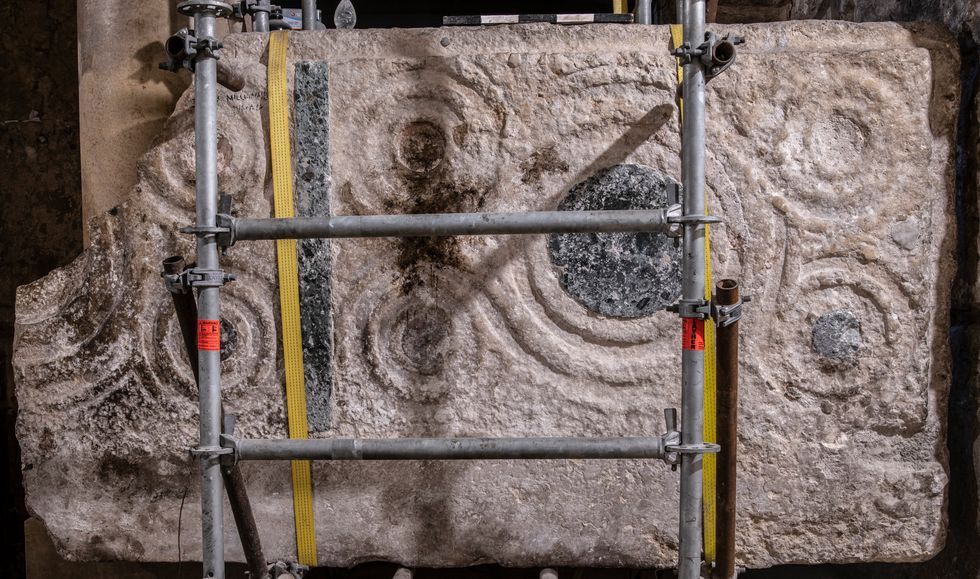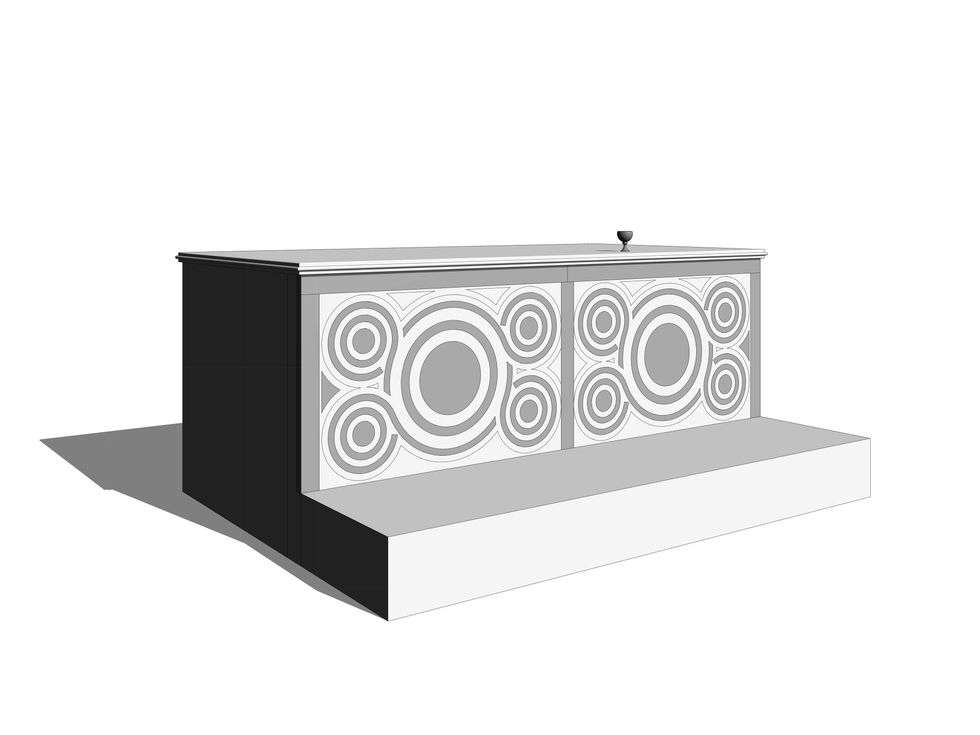Archaeology breakthrough after lost altar at location of Jesus’s empty tomb discovered

The Cosmatesque designs on the altar | Shai Halevi/Israel Antiquities Authority

Researchers found the altar within one of the rear corridors connecting to the middle chamber
Don't Miss
Most Read
Archaeologists have made a ground-breaking discovery at one of the holiest sites in Christianity.
Teams of researchers have discovered a lost crusader altar in the Church of the Holy Sepulchre, supposedly built on the site of Jesus's crucifixion in the Christian Quarter of the Old City of Jerusalem.
In a rear corridor of the church a stone slab daubed in graffiti weighing several tons had been leaning against a wall for an unknown period of time.
However, after it was turned around, it was found to be decorated beautiful ribbon ornaments which enabled its identification as the former front panel of the medieval Crusader altar, consecrated in 1149 and which seemed to have been lost after a fire in 1808.

The Cosmatesque designs on the altar
|Shai Halevi/Israel Antiquities Authority
Scientists were left surprised as the church, which is open to the public, is visited by thousands of pilgrims and tourists every day, with the slab in plain sight for visitors.
Ilya Berkovich from the Austrian Academy of Sciences (OAW), who conducted the research alongside the Israel Antiquities Authority said: "We know of pilgrimage reports from the 16th, 17th and 18th centuries about a magnificent marble altar in Jerusalem.
"The fact that something so important could stand unrecognised in this of all places was completely unexpected for all concerned.
"In 1808, there was a major fire in the Romanesque part of the Church of the Holy Sepulchre. Since then, the Crusader’s altar was lost - at least that's what people thought for a long time."
LATEST DEVELOPMENTS

Members of the Orthodox Christian clergy disperse incense around the Edicule, which houses what is traditionally believed to be the tomb of Jesus Christ, inside the Church of the Holy Sepulchre
|Reuters

The graffiti clad altar
|Amit Re’em/Israel Antiquities Authority
The way in which the altar was decorated also provided researchers with a key link between Rome and Jerusalem with a production technique known as "Cosmatesque."
This procedure for marble decoration was practised exclusively by guild masters in papal Rome, who passed the skill down from generation to generation. For the Pope at the time, the Cosmatesque art was a cherished status symbol.
Only a few Cosmatesque works of art are known outside of Rome, and so far only one outside of Italy, in Westminster Abbey. The Cosmatesque altar now rediscovered in Jerusalem must also have been created with the Pope's blessing.
By sending one of the Cosmatesque masters to the Kingdom of Jerusalem to make the new high altar in Christianity’s holiest church, the Pontif supported Christianity's claim to the city: Berkovich added: "The Pope thus paid tribute to the holiest church in Christianity."

An artist's rendition of the altar
|Roy Elbag, Ilya Berkovich/Amit Re’em
Berkovich continued: "With an original breadth of more than 3.5 meters, we have discovered the largest medieval altar currently known."
He added He hopes that further research in the papal archives will reveal more details about the history of the altar and possibly even the identity of the Cosmatesque master who created the artwork.










